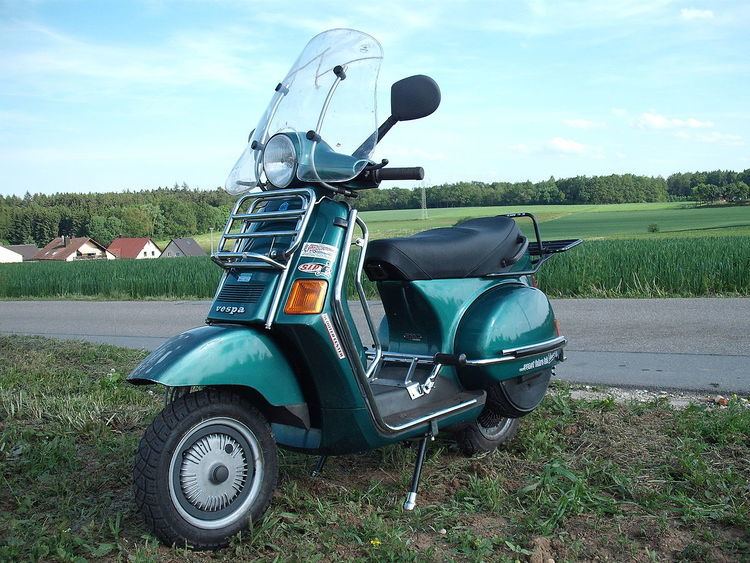 | ||
The Vespa Cosa is a model of scooter produced by Piaggio under the Vespa brand. It was in production from 1988 to 1993.
Contents
History
The Vespa Cosa was initially to be called the Vespa R (standing for Rinnovata, meaning "renewed"). It was unveiled at the Milan Motorcycle Show in 1987. The Cosa is a direct successor to the Vespa PX series, and although the internal workings are largely similar, it came with newly developed gearbox that was a significant improvement upon the gearbox that had previously been used in the PX series. The PX series was still in production at the time, however, and has continued production even after Cosa production was discontinued. Other improvements upon the PX series included storage space beneath the seat and anti-lock brakes on the front wheel. More controversially, it was also the first Vespa to utilise a significant amount of plastic parts in addition to the traditional monocoque pressed steel frame.
The series is broadly divided into two generations. The first generation was built from 1988 to 1991, while the second generation (sometimes referred to as the Cosa FL) was in production from 1992 onwards. Both version are fundamentally the same, with some minor differences. Firstly, the clutch was modified so that it would be easier to pull in and release. Secondly, minor design alterations were made: the tail light was slightly different and moved to a new position, the seat lock was installed on the side of the saddle, and the saddle was widened for extra comfort.
Technical Information
While the engine is virtually identical to that of the Vespa PX series of the time, there are three major differences in the design:
In addition, the carburetor on the Vespa Cosa came stock fitted with an electronic fuel valve and automatic choke. It also had a digital tachometer (similar to that on later versions of the Vespa T5).
